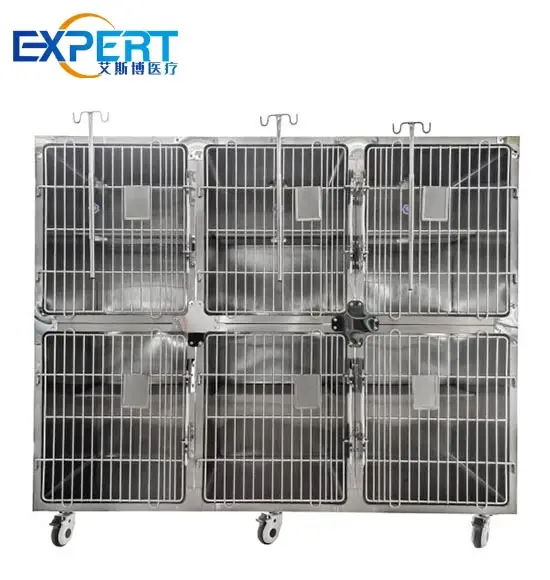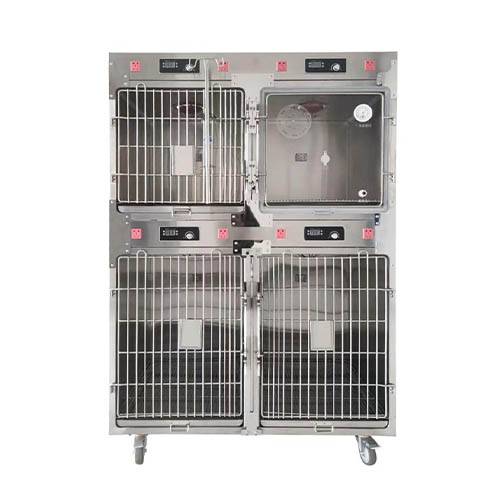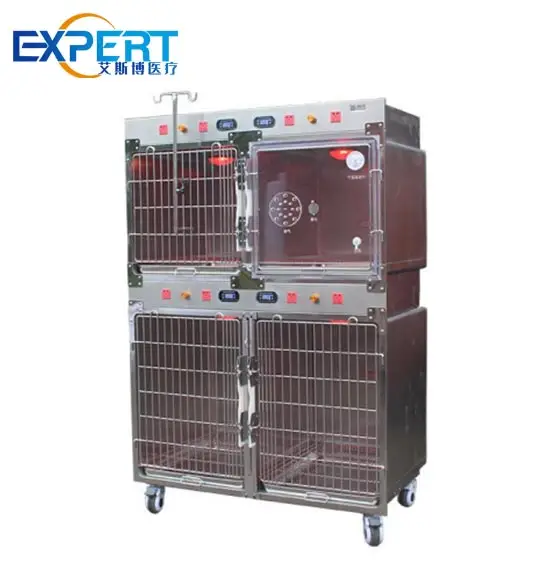Адрес
304 North Cardinal St.
Дорчестер-центр, Массачусетс 02124
Часы работы
С понедельника по пятницу: с 7:00 до 19:00.
Выходные: 10.00 - 17.00

Veterinary isolation cages play a crucial role in ensuring the health and safety of animals in clinical settings. These specialized enclosures are designed to separate animals from their surroundings and from other animals to prevent the spread of disease and manage health conditions effectively. This blog will explore the importance of veterinary isolation cages, their key features, and how they contribute to optimal animal care and safety.
Veterinary isolation cages are specialized enclosures used to isolate animals that are sick, undergoing treatment, or at risk of transmitting infectious diseases. These cages are designed to provide a controlled environment that minimizes the risk of disease spread and ensures that animals receive appropriate care and monitoring.






Veterinary isolation cages are essential for containing contagious diseases. By isolating infected animals, these cages prevent the spread of pathogens to healthy animals, thus controlling outbreaks and maintaining a safer environment for all animals.
Animals with weakened immune systems or those undergoing intensive treatments benefit from the controlled environment provided by isolation cages. These cages help protect them from potential infections and environmental stressors that could compromise their recovery.
Isolation cages allow for precise diagnostics and treatment in a controlled setting. By minimizing external variables, veterinarians can better monitor symptoms, track progress, and adjust treatment plans accordingly.
In multi-animal facilities, isolation cages prevent cross-contamination by ensuring that animals with different health statuses do not come into contact. This is crucial for maintaining the overall health and safety of the animal population.
| Характерная черта | ||||
|---|---|---|---|---|
| Размер | Small (24x24x24 inches) | Medium (36x24x24 inches) | Large (48x24x24 inches) | Extra-Large (60x24x24 inches) |
| Материал | Нержавеющая сталь | Сталь с порошковым покрытием | Plastic Composite | Алюминий |
| Ventilation System | Standard Fan | HEPA Filter | Advanced Air Purifier | Dual-Filter System |
| Access Doors | Single Sliding Door | Double Sliding Doors | Front and Top Access | Front, Top, and Side Access |
| Monitoring System | Basic Observation | Built-in Cameras | Удаленное наблюдение | Integrated Sensors |
| Cleaning Mechanism | Руководство | Automatic Wash System | High-Pressure Sprayer | Self-Cleaning System |
| Контроль температуры | Fixed Temperature | Adjustable Thermostat | Digital Temperature Control | Advanced Climate Control |
In veterinary clinics and hospitals, isolation cages are used to manage animals with infectious diseases, those recovering from surgery, or those with compromised immune systems. They ensure a safe and controlled environment for treatment and recovery.
In research settings, isolation cages are critical for conducting studies on infectious diseases, vaccine development, and other research involving animal subjects. These cages help ensure accurate results by controlling variables and preventing cross-contamination.
Animal shelters use isolation cages to manage animals that are newly admitted, ill, or showing signs of contagious diseases. This helps protect the health of all animals in the shelter and provides a safe space for those in need of medical attention.
In breeding facilities, isolation cages are used to monitor the health of breeding animals and their offspring. They help in preventing the spread of diseases among animals and ensuring the health of future generations.
By isolating animals with infectious diseases, veterinary isolation cages prevent the spread of pathogens and protect both individual animals and the larger animal population.
These cages offer a controlled environment that reduces stress and improves the overall welfare of animals, particularly those undergoing treatment or recovery.
Veterinary isolation cages are designed to maximize the use of space while providing a safe and controlled environment. This allows veterinary facilities to manage multiple animals efficiently.
With features such as integrated monitoring systems and easy access for veterinary staff, isolation cages facilitate better observation and care of animals, leading to more effective treatment and recovery.

The initial cost of purchasing and installing veterinary isolation cages can be significant, especially for advanced models with integrated systems.
Isolation cages require dedicated space, which may be a limitation in smaller facilities or those with limited space availability.
Regular maintenance and cleaning of isolation cages are essential to ensure their effectiveness and longevity. This can be time-consuming and requires proper procedures.
Veterinary isolation cages are an indispensable tool in maintaining animal health and safety. Their ability to provide a controlled environment, prevent disease spread, and enhance animal welfare makes them essential in various settings, from veterinary clinics to research facilities. While there are some limitations, the benefits far outweigh the drawbacks, making isolation cages a vital component of modern animal care.
What are the primary functions of veterinary isolation cages?
Veterinary isolation cages are designed to contain infectious diseases, protect vulnerable animals, improve diagnostics and treatment, and prevent cross-contamination.
How do veterinary isolation cages benefit animal health?
They provide a controlled environment that reduces stress and exposure to pathogens, leading to better recovery and overall health of animals.
What types of materials are used in veterinary isolation cages?
Common materials include stainless steel, powder-coated steel, plastic composites, and aluminum, each offering different benefits for durability and ease of cleaning.
Are there different sizes of veterinary isolation cages?
Yes, isolation cages come in various sizes, from small enclosures to extra-large units, to accommodate different types of animals and their needs.
What features should be considered when choosing a veterinary isolation cage?
Important features include ventilation systems, access doors, monitoring capabilities, cleaning mechanisms, and temperature control.
How often should veterinary isolation cages be cleaned?
Isolation cages should be cleaned regularly according to the facility’s protocols to maintain hygiene and prevent cross-contamination.
Are there any alternatives to veterinary isolation cages?
While isolation cages are highly effective, alternatives may include specialized quarantine rooms or portable isolation units, depending on the specific needs of the facility.
